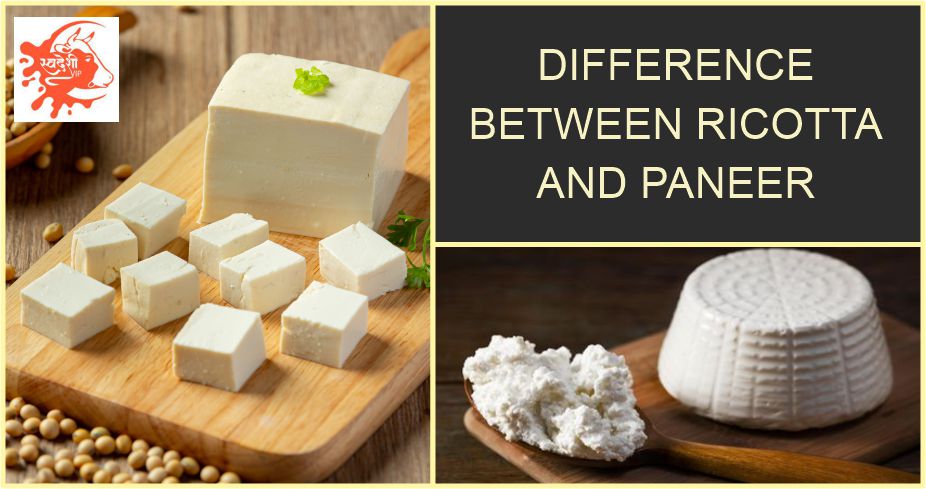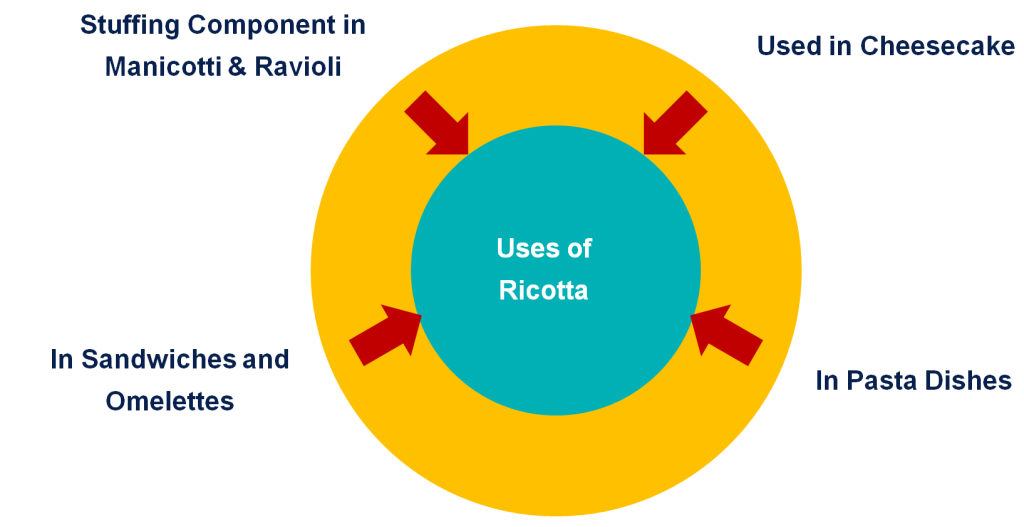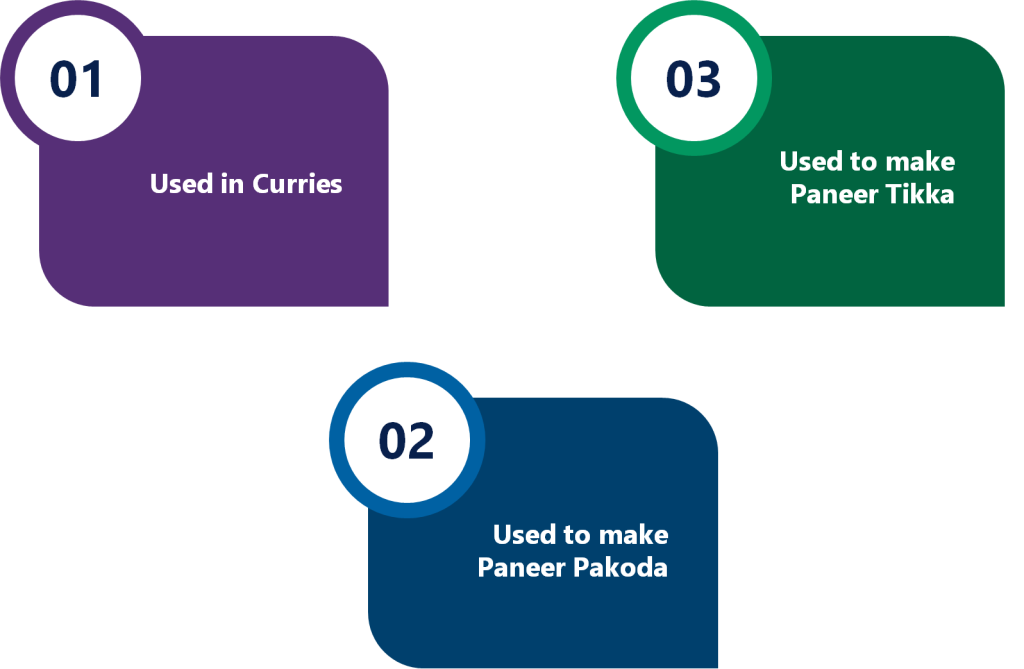
To develop a strong flavour and other qualities, cheese kinds are aged over time. Along with losing some moisture, they also grow firmer in texture as a result of this process. Some cheese kinds, however, are eaten fresh rather than aged. These cheese variants are referred to as fresh cheese because they often contain more moisture than aged cheese. Both ricotta and paneer are a new variety of cheese. Ricotta can even be used in place of paneer in some recipes because of how similar it looks to paneer. But they are both made differently, with a few differences. Thus, this blog will let you know the difference between ricotta and paneer.
Before knowing about the difference between Ricotta and Paneer, you need to know that whey cheese is what ricotta is. It basically means that it is produced leftover from creating other cheese. The concept of whey and curd separation is presumably familiar to you. Protein, lipids, and carbohydrates clump together in the curd during milk solids and water. Whey can be handled in a number of ways to create various forms of cheese rather than being discarded.
Ricotta[1] becomes a mildly textured, creamy, and smooth cheese. It comprises the whey’s remaining fat, which varies significantly according to the type of cheese from which it is formed initially. But don’t be deceived by it. Ricotta is rich and has the dense texture of a high-fat cheese despite having a low-fat content.
Ricotta is prepared from whole milk in the US and other numerous nations. The method ultimately involves heating the whole milk to a near-boiled and then adding an acid. The milk protein is precipitated and denaturated by the acid. Simply said, it causes curds to form from milk solids. The curds are then removed, and bingo! You have ricotta.
But apart from that, Ricotta, which has been made traditionally, is distinct. Once-used whey is collected by cheese makers. Rennet, a common acid, is already present in this whey. It is then “re-cooked” with the whey. It is heated to a temperature significantly higher than the temperature at which the original cheese was made, yet just below boiling. It is through this that terms like “re-cooking” are derived. It produces curds to heat the whey. Ricotta is created by transforming the curds.
Using whey instead of whole milk makes a significant difference. The primary ingredient is still whey, though occasionally milk or cream is added to make up for the lack of milk solids.
Recipes of lasagna and other Indian Casseroles frequently call for ricotta. Additionally, it is frequently used as a stuffing component in ravioli, manicotti and other pasta dishes. It can be used in sweets like cheesecake, where it is utilised similarly to mascarpone, or as a filling for cannoli or layer cakes where it is combined with sugar, spices and flavouring. Mayonnaise can be replaced with ricotta in sandwiches, omelettes and quiche. It goes particularly with the fresh figs and is frequently put on toast in Italy along with the little honey on it.

Before marching ahead on the difference between ricotta and paneer, it’s crucial to know about paneer. Fresh cheese, known as paneer, is created by boiling the milk and then using the acid to curdle it. It is used in many Indian dishes. It has a very milky and very mild flavour, is white in colour, and has a soft, spongy and squeaky texture. Its textures make it easier to absorb the tastes of marinades and sauces. It can be made from full, skim or reduced-fat milk and can be made from pasteurised milk or raw milk of cow and buffalo milk.
A non-melting cheese is known as a paneer. The way that milk proteins are bonded together is altered while making paneer since heat and acid are used to curdle the milk rather than rennet. Paneer doesn’t melt when heated; instead, it maintains its structure, allowing it to be boiled, fried, or grilled without disintegrating. In actuality, heating paneer causes the milk proteins to link together more firmly, forcing any leftover water out rather than melting it. Paneer can become rubbery if heated for an excessively long time.
Making paneer is a straightforward process that only takes a few hours from beginning to end and can easily be done at home, unlike cheese made with rennet and live cultures, which requires prolonged aged in settings with carefully controlled humidity.
First, bring two quarts of whole milk to a rolling boil over medium heat. For two minutes, let it boil, often stirring to prevent the bottom from burning. Add two tablespoons of lemon juice to one cup of water as the milk is heating up. Remove the milk from the flame after it has boiled for 2 minutes, and then slowly stir in the lemon juice mixture. You’ll notice a whey thin greenish liquid started separated into lumps of white milk protein in a matter of a second. The addition of cool water now pauses the cooking process and ensures that the paneer will be soft.
The mixture is now passed through a sieve covered in a muslin or cheesecloth. Some cook chooses to reserve the whey to use in other dishes, such as chapatti and flatbread. The cloth containing the curds is then loosely collected and submerged in a series of a bowl of cold water until the water appears clean. By doing this, the cheese sourness is reduced. To press the curd into a flat disc, a heavy object, such as an iron skillet, is placed on top after it has been tightly twisted to squeeze out the liquid. The cheese is prepared for consumption within 20-30 hours.
Before being used in dishes, paneer is typically chopped in cubes in Indian cuisines. It can be grilled, fried or cooked on skewers over an open flame without losing shape because it is a non-melting cheese. It is frequently used in curries like paneer makhani, a tomato-based curry with paneer, palak paneer, a spinach curry with paneer. Cubes of paneer are battered in chickpea flour and deep-fried to make paneer pakora. Cubes of paneer are marinated in the yoghurt and species before being grilled on skewers with veggies and finished in a clay oven to make paneer Tikka.
Paneer rapidly takes on the tastes of the spices and other ingredients. It is cooked with due to its spongy nature. Cooks frequently hold the fried paneer with water to prevent drying out when the cubes are fried before adding it to a meal.

Ricotta is a soft cheese with a mild flavour that is used in many pasta dishes, including lasagna. Full-fat, soft cheese called paneer is utilised in Indian cuisine. This vegan cheese is compressed until it has a firm, tofu-like consistency. Paneer is a fantastic meat alternative because it is an excellent source of protein. When cooked, the cheese keeps its structure and absorbs the flavour used to prepare it.
The only difference between ricotta and paneer is how they are made exactly the same way. For around 10 minutes, the curds of ricotta are squeezed into a cotton cloth.
The curds for paneer are similarly strained in a muslin cloth, then wrapped in fabric and squeezed out. After that, it is subjected to significant weight, such as an iron pot, for roughly an hour. Because of this, it is drier than ricotta and suitable for various dishes. It is also simple to cut into cubes and fry. The paneer grows firmer the longer it is kept under pressure.
Conclusion
Unaged cheese is referred to as fresh cheese. Fresh cheeses like ricotta and paneer can both be used in place of one another in some recipes. The proteins in leftover whey are heated, coagulated with food acids, or curdled with rennet to create ricotta, whereas cow or buffalo milk is heated to create curd, and only food acids, no rennet, are used to create paneer. It is the difference between ricotta and paneer. If you’re looking to buy farm-fresh A2 paneer in Noida, you can purchase a SwadeshiVIP A2 cow milk paneer. We provide 100% fresh and pure A2 organic paneer, So what are you waiting for!!
Read Our Article: Buy Farm Fresh Paneer in Noida and Bring a Change in Diet Chart
